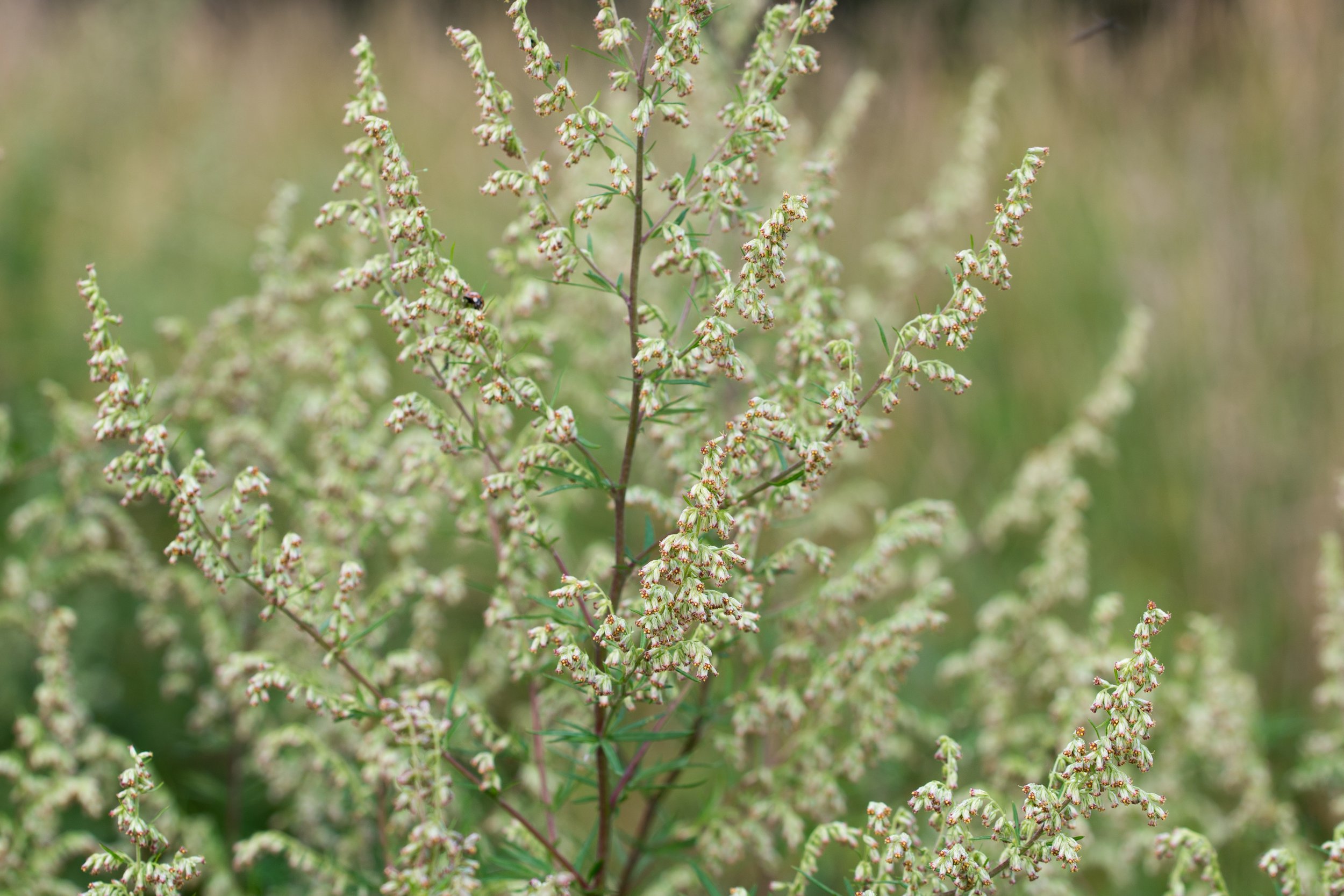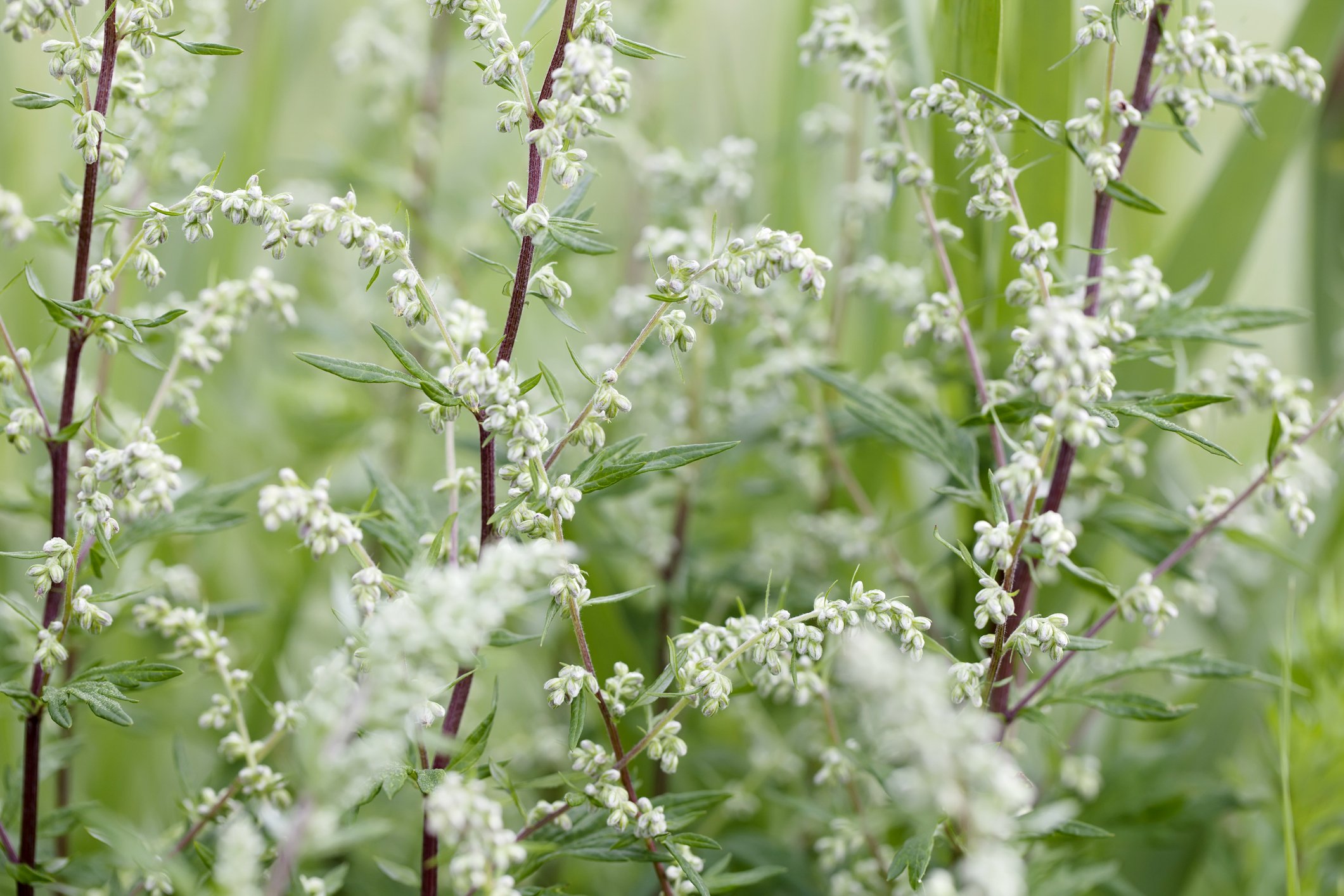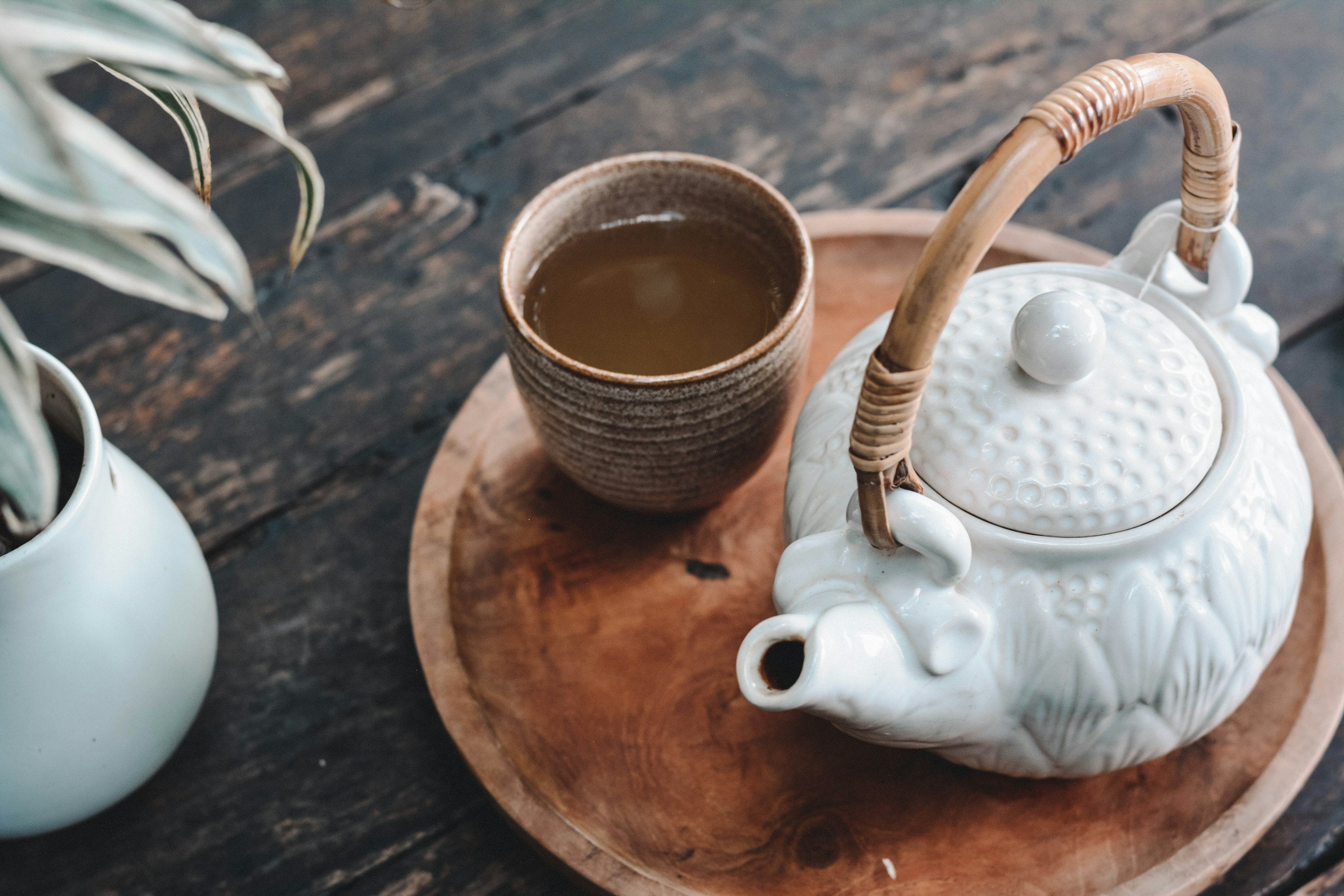
Mugwort
Mugwort (Artemisia vulgaris)
Plant family
Asteraceae
Other significant names
Artemis’ plant
Cronewort
Parts used
Herba (flowering stage)
Typical forms of prescription
Tinctures
Infusions
Aromatherapy
Mugwort (Artemisia vulgaris) - Clinical Snapshot
Primary Actions
Emmenagogue
Orexigenic (appetite stimulant)
Choleretic
Stomachic
Anthelmintic
Diuretic
Antiseptic
Anti-malarial
Tonic
Stimulant
Nervine
Diaphoretic
Primary Indications
Menorrhagia (heavy menstrual bleeding)
Functional amenorrhoea (absence of menstruation)
Scant but prolonged menstruation
Delayed menstruation
Dysmenorrhoea (painful menstruation)
Metrorrhagia (irregular bleeding)
To hasten labour and placental expulsion
Anorexia
Indigestion
Roundworms and threadworms
Colic
Nervous dyspepsia
Depression
Anxiety
⚠️Cautions / Safety⚠️
Not to be taken during pregnancy or while trying to conceive
Bitter and aromatic, Mugwort stimulates digestive juices, which can worsen hyperacidity or reflux.
Caution is advised in gastritis, peptic ulcers, or GERD.
Avoid if allergic to the Asteraceae family
Artemisia vulgaris
Phytochemistry and Pharmacology
-
Includes: Thujone, cineole, camphor, borneol
Action: Aromatic, carminative, antispasmodic, emmenagogue, antimicrobial
Use: Mugwort’s volatile oils contribute to its stimulating, warming, and slightly bitter nature. They help relieve digestive cramps, encourage menstruation, and stimulate circulation. Traditionally, it has been used to ease delayed or painful periods, support digestive flow, and dispel cold/damp stagnation. Its antimicrobial oils may also support the gut microbiome and act as a mild anthelmintic.
-
Includes: Vulgarin, artemisin
Action: Bitter tonic, cholagogue, anti-inflammatory
Use: These compounds stimulate bile flow, enhance liver function, and provide anti-inflammatory actions. Mugwort has been traditionally used for liver sluggishness, poor fat digestion, and skin conditions rooted in hepatic imbalance.
-
Includes: Quercetin, kaempferol, luteolin
Action: Antioxidant, antiallergic, anti-inflammatory
Use: These help protect against oxidative stress, reduce inflammation, and support vascular tone. They also contribute to mugwort’s nervine and mildly calming effects, particularly when addressing PMS or menopausal anxiety.
-
Includes: Scopoletin, umbelliferone
Action: Mild anticoagulant, smooth muscle relaxant
Use: These support blood flow and tissue relaxation, enhancing mugwort’s use in cramping, uterine tension, and muscle spasms, particularly where the tension is stress-related or cold-induced.
-
Includes: Lupeol, betulinic acid
Action: Anti-inflammatory, antimicrobial, hepatoprotective
Use: These compounds reinforce mugwort’s anti-inflammatory and liver-supportive properties, which are useful in chronic digestive or reproductive imbalances.
Traditional use
Known as Mater Herbarum (mother of herbs), Greek physician Dioscorides (1st century CE) stated a link between the herb and the goddess Artemis (who inspired the plant’s genus name) and that it was believed to aid women during childbirth. A leaf under the pillow was thought to help dream of a future love. Leaves placed in the shoes were supposed to help with travel fatigue. Tea and the aroma from flowers are used to help lucid dreaming.
They are also used in moxibustion in Traditional Chinese Medicine (TCM).
Moxibustion involves burning moxa (ground Mugwort) on or near the skin to stimulate specific points and promote the flow of vital energy and blood, which is often used alongside acupuncture to treat various conditions.
Clinical description
Mugwort is used in hormonal regulation by herbalists. Due to its emmenagogue action, it is usually added to tincture mixes for secondary amenorrhea (disrupted menstruation) due to issues such as hormonal imbalance. Because of this action, it should be avoided in pregnancy and in those trying to conceive. Because it is slightly bitter, it is also helpful for digestive bitter drops, especially in digestive upsets caused by hormonal issues, or lack of appetite (anorexia).
In addition, it is also a nervine, helping ease tension, so it can be helpful for PMS.
Cultivation/harvesting
Mugwort (Artemisia vulgaris) is a hardy perennial that thrives in poor, well-drained soil and full sun to partial shade. It is highly adaptable and can tolerate neglect, drought, and low nutrient levels, making it a resilient choice for wilder garden spaces, borders, and hedgerows.
It spreads readily via rhizomes, so consider containing it if planting in a small space. Mugwort also self-seeds if allowed to flower, which can contribute to its invasiveness in some areas.
Harvest when the plant is in full flower, typically in mid to late summer (July to early September in the UK), when it is at its most aromatic.
The best time to harvest is on a dry day, ideally in the morning after the dew has lifted.
Choose the upper aerial parts—including flowering tops and leaves—when they release a strong scent when crushed.
Dry in small bundles hung upside down in a shaded, well-ventilated area, or lay flat on drying racks.
Once fully dry, strip the leaves and flowering tips from the woody stems and store in airtight jars away from light and heat.
Mugwort's volatile oils and bitter principles are best preserved when dried quickly and stored properly. If making infused oils, smudge bundles, or tinctures, fresh harvest is preferred.
Key Botanical Features of Mugwort (Artemisia vulgaris)
Growth
Type: Perennial herb.
Size: Grows 1–2 meters (3–6.5 feet) tall.
Stem: Erect, reddish to purplish, and branched, often woody at the base.
Leaves
Type: Alternate, deeply pinnate-lobed.
Shape: Lanceolate to oblong, with deeply divided segments.
Size: 5–20 cm (2–8 inches) long.
Margins: Serrated or irregularly toothed.
Texture: Soft and slightly hairy underneath.
Colour: Dark green on top, silvery-white underneath due to fine hairs.
Aroma: Strong, camphor-like scent when crushed.
Flowers
Type: Small, inconspicuous, and arranged in dense, elongated panicles.
Size: 3–5 mm (0.1–0.2 inches) in diameter.
Colour: Yellowish-green to reddish-brown.
Flower Arrangement: Clustered in drooping, spike-like inflorescences.
Blooming Period: Late summer to early autumn (July–September).
Pollination: Wind-pollinated.
Fruits & Seeds
Fruit Type: Small, dry achenes.
Size: Tiny, about 1 mm long.
Dispersal: Primarily by wind and animals.
Roots
Type: Extensive rhizomatous root system.
Function: Helps the plant spread aggressively, making it challenging to eradicate.
Habitat & Growth Conditions
Climate: Prefers temperate to subtropical climates.
Soil: Tolerates a wide range of soils, including poor, dry, or disturbed soils.
Sunlight: Prefers full sun to partial shade.
Water Requirements: Drought-tolerant, grows well in moderate to dry conditions.
Distribution: Native to Europe, Asia, and North Africa, but widely naturalised in North America and other regions.
Sustainability/conservation
Widespread.





Sources
Bartram, T. (1998). Bartram’s Encyclopedia of Herbal Medicine. Constable.
Fisher, C. (2009). Materia Medica of Western Herbs, (2018 edition). Finchley Road, London. Aeon Books.
Hedley, C & Shaw, N. (2020). A herbal book of making and taking. Finchley Road, London. Aeon Books.
Hoffmann, D. (2003). Medical Herbalism: The Science and Practice of Herbal Medicine. Healing Arts Press.
McIntyre, A. (2019). The complete herbal tutor, revised and expanded edition. Finchley Road, London. Aeon Books.
Plants of the World Online | Kew Science. (n.d.). Plants of the World Online. https://powo.science.kew.org/
Disclaimer: This page is for educational purposes only. Consult a qualified medical herbalist before using herbs, especially during pregnancy, when trying to conceive, while breastfeeding, for medical conditions, or with children.
Read the full disclaimer → Medical Disclaimer.




